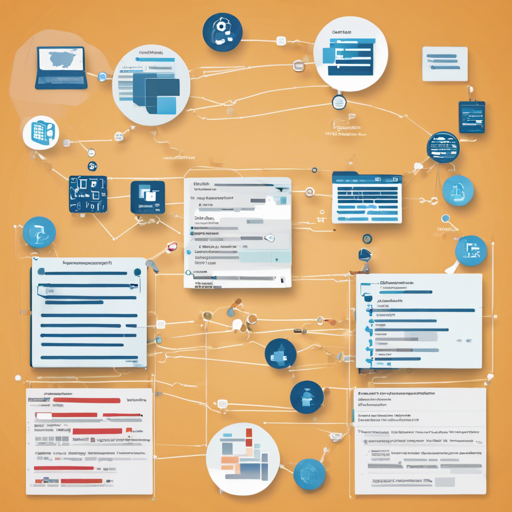Managing and mapping complex datasets can often feel overwhelming for developers. Fortunately, protoc-gen-map steps in as a knight in shining armor, offering a seamless way to bridge SQL data and protocol buffers without the need for extensive coding. In this blog, we will walk you through how to use this tool effectively, troubleshoot potential issues, and ensure you get the most out of it.
What is protoc-gen-map?
protoc-gen-map is a code-generating plugin designed for Protocol Buffers, simplifying the process of retrieving SQL data and mapping it to protocol messages. By using this tool, developers can focus on defining their SQL statements and proto messages, while the heavy lifting of data mapping is handled automatically.
Why Use protoc-gen-map?
- Simplifies Data Handling: Eliminates the need for custom mapping code.
- Language Agnostic: Works with any programming language that supports Protocol Buffers and gRPC.
- Efficiently Handles Complex Queries: Unlike traditional Object-Relational Mappers (ORMs), it excels with large datasets.
Setting Up Your Environment
Before diving into the examples, let’s set the stage by ensuring that you have everything ready to go.
go get -u github.com/jackskj/protoc-gen-mapUnderstanding SQL Templating
To make sense of how this mapping works, think of SQL statements as recipes. Just as chefs need precise instructions for their dishes, developers need syntactically correct SQL statements to procure data from databases. With protoc-gen-map’s templating feature, you can dynamically adjust your SQL queries based on incoming request messages, similar to modifying a recipe based on the available ingredients.
Example Use Case: Simple Blog Retrieval
Let’s kick things off with a simple example. Imagine a request for blog information through a gRPC service. Here’s how you can define SQL templates:
service BlogService {
rpc SelectBlog (BlogRequest) returns (BlogResponse);
rpc SelectBlogs (BlogRequest) returns (stream BlogResponse);
}
message BlogRequest {
uint32 id = 1;
string author_id = 2;
}
message BlogResponse {
uint32 id = 1;
string title = 2;
string author_id = 3;
}
define SelectBlog
select id, title, author_id from blog where id = .Id
limit 1
end
define SelectBlogs
select id, title, author_id from blog where author_id = .AuthorId
endWhen Complexity Strikes
As projects scale, queries can evolve into intricate webs. Consider this analogy: It’s like organizing a library. Initially, you might only need to sort books by genre, but soon you’ll find yourself categorizing them by author, publication year, and even reviews. protoc-gen-map supports this complexity without bogging you down with manual data handling.
Example of a Complex Query
Suppose you want to retrieve detailed blog information along with associated authors, posts, and comments. The SQL statement would look something like this:
define SelectDetailedBlog
select
id as blog_id,
title as blog_title,
A.id as author_id,
A.username as author_username,
...
C.id as comment_id,
C.comment as comment_text,
T.id as tag_id,
T.name as tag_name
from blog
left outer join author A on blog.author_id = A.id
left outer join post P on blog.id = P.blog_id
left outer join comment C on P.id = C.post_id
left outer join post_tag PT on PT.post_id = P.id
left outer join tag T on PT.tag_id = T.id
where blog.id = .Id
endSteps to Get Started
To use protoc-gen-map, follow these three simple steps:
- Define SQL and Proto: Write your SQL templates and corresponding Proto service definitions.
- Generate Code: Execute the protocol buffer compiler with specific flags to generate the necessary files.
- Create the Server: Instantiate your service with a database connection and prepare to serve requests.
Troubleshooting Common Issues
Even the best tools can hit a snag. Here are some troubleshooting tips to help you out:
- Check SQL Syntax: Ensure your SQL statements are well-formed. A single syntax error can lead to unexpected behavior.
- Match Proto and SQL: Ensure the SQL template names correspond to the defined gRPC methods.
- Inspect Database Connections: Verify your database connection settings are correct.
- For more insights, updates, or to collaborate on AI development projects, stay connected with fxis.ai.
Conclusion
With the power of protoc-gen-map, you can effectively streamline your SQL data mapping, reducing complexity and enhancing performance. Remember, though this tool automates much of the process, ensuring accuracy in your definitions and SQL statements is crucial for achieving optimal results. At fxis.ai, we believe that such advancements are crucial for the future of AI, as they enable more comprehensive and effective solutions. Our team is continually exploring new methodologies to push the envelope in artificial intelligence, ensuring that our clients benefit from the latest technological innovations.

